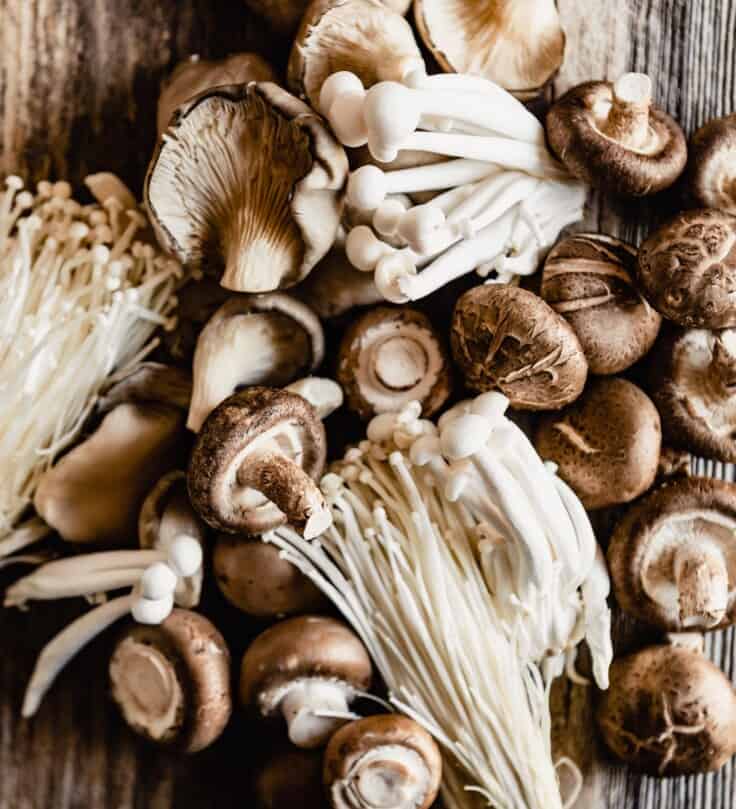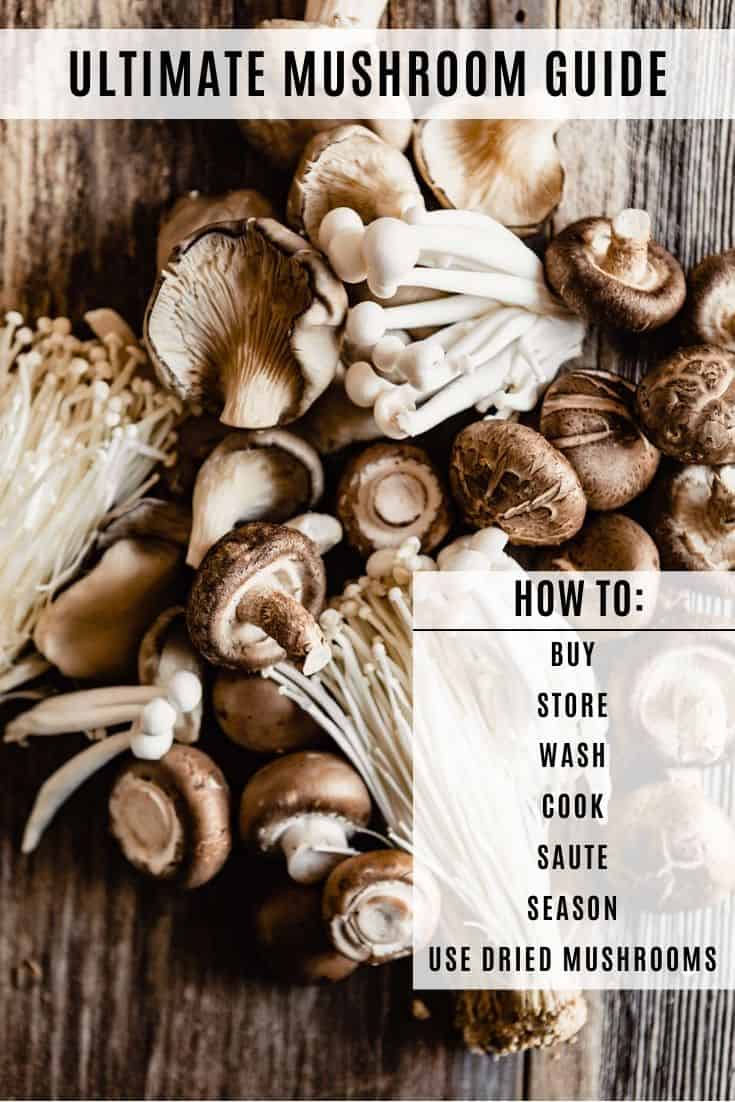Mushrooms are an incredibly flavorful and versatile ingredient. They’re a great way to add savory umami in cooking and can also be used to bulk up vegetarian dishes, making them anything but boring. By the end of this you’ll know how to cook mushrooms in a variety of ways!
Mushrooms aren’t difficult to cook with, but they do require a little TLC. That’s why we’ve put together this complete guide on mushrooms—everything from how to wash mushrooms, how to sauté mushrooms, how to store them and more. You’ll know how to cook mushrooms in no time!
Table of Contents
How to Cook Mushrooms
There are nearly as many ways to cook mushrooms as there are types of mushrooms—but the best methods are those that feature high heat, a good amount of fat, and contact with a pan (to get that gorgeous browning). Here’s how you can cook mushrooms:
- Sautéing
- Pan-frying
- Deep frying
- Roasting
- Soups
- Sauces
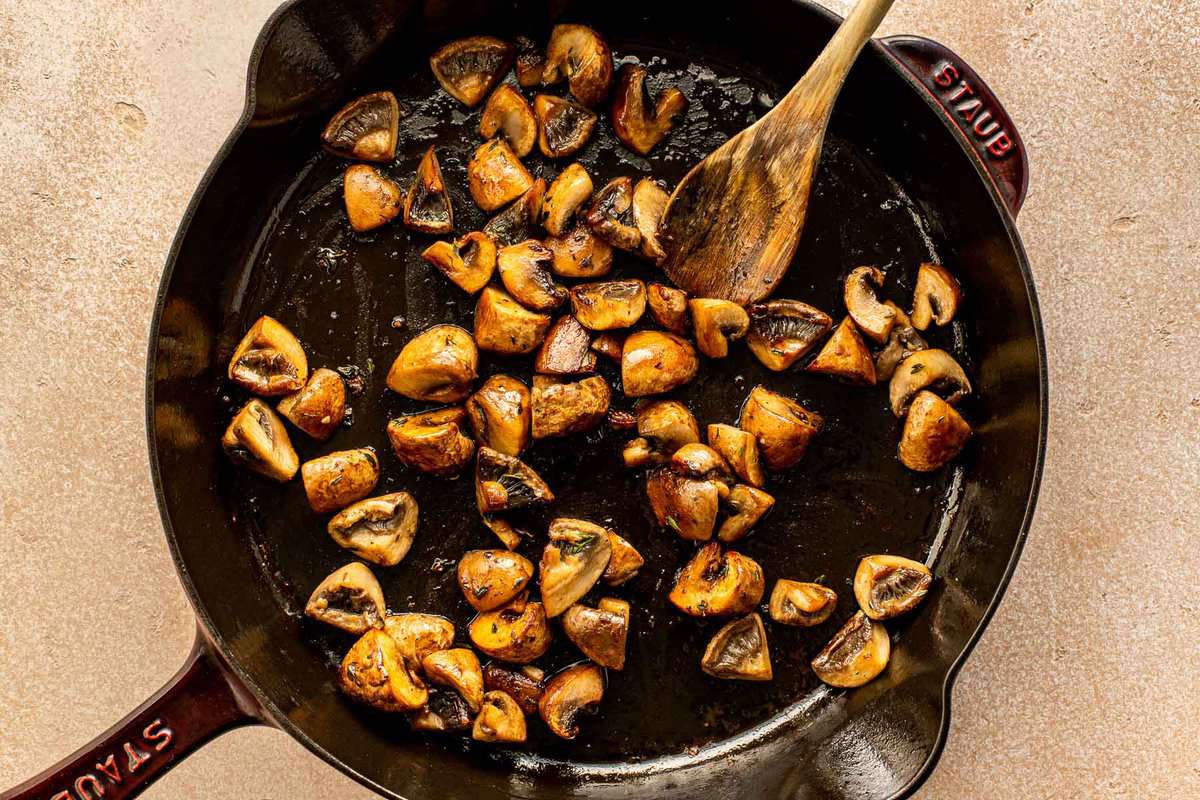
How to Sauté Mushrooms
Beautifully sautéed mushrooms should have a golden crust, toothsome bite, and deep flavor. All mushroom types are suited for sautéing, but we especially love shiitake, cremini and oyster.
- Cut mushrooms to a consistent size
Either slice mushrooms ½-inch thick or cut them into chunks by halving small mushrooms and quartering large one. - Start with oil
Start by heating a splash of oil over medium-high heat until shimmering. Add mushrooms and cook, stirring occasionally, until their liquid has been released, about 5 minutes. - Increase the heat
Increase the heat to high and cook, stirring occasionally, until liquid has evaporated, about 8 minutes. - Reduce heat and add butter
Reduce heat to medium, add a pat of butter and cook, stirring occasionally, until mushrooms are deep golden brown, about 8 minutes. - Season with salt towards the end
Season mushrooms with salt towards the end of cooking—once the mushrooms have a nice golden color to them. Then season with pepper when you remove them from heat.
Put this method to use with our Mushrooms Crostini Appetizer Recipe. We also top our Vegan Ravioli and Slow-Cooker Turkey Wild Rice Soup with golden sautéed cremini mushrooms. You can also mince up cremini, shallots and garlic to make a duxelle for our Mini Beef Wellington Bites. Or stuff sautéed mushrooms into our Cottage Cheese Lasagna—the options for sautéed mushrooms are endless!
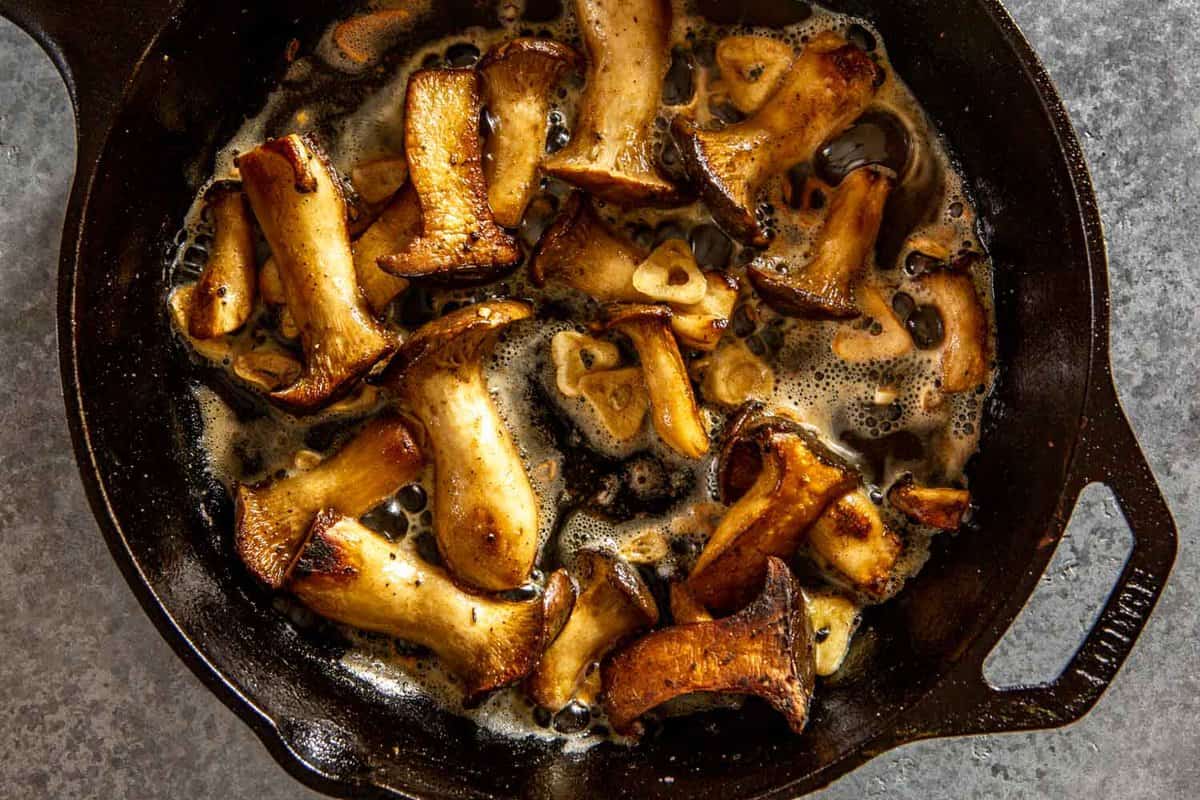
How to Fry Mushrooms
There are a couple of ways you can fry mushrooms. The first is a simple pan-fry method and the second is a tempura-style deep fat fry method.
The best mushrooms for pan frying are morel, King trumpet, shiitake, and maitake (hen of the woods).
How to Pan-Fry
We love to pan-fry mushrooms because it’s similar to sautéing (easy) with more fat in the pan and less stirring.
- Cut mushrooms to a medium-large and consistent size
If you’re using large mushrooms like king trumpet, slice them down the middle and place them cut-side down in the pan. - Start in oil and leave alone!
Start by heating at least 2 tablespoons oil over medium-high heat until shimmering. Add mushrooms cut side down and let cook, without moving until they are golden brown, 5–8 minutes. - Flip and add butter
Flip the mushrooms over, add a few pads of butter and allow them to cook, without moving, until second side is golden brown, 5–8 minutes more. - Season with salt towards the end
Season mushrooms with salt towards the end of cooking—once the mushrooms have a nice golden color to them. Then season with pepper when you remove them from heat.
Put this method to use in our Pan-Fried King Trumpet Mushrooms. Or make vegan scallops (yes!) with the stems of King Trumpet mushrooms.
How to Deep Fry Mushrooms
Deep frying mushrooms isn’t an overly popular method and it’s not one of our favorites, but if you’re looking to try it here’s a quick run down:
- Make a beer batter
Use any beer batter recipe or tempura batter recipe you like. - Heat oil
Heat 3 inches of a neutral high-heat oil (such as canola or peanut oil) in a Dutch oven or heavy bottomed pot to 375ºF (190ºC) for beer batter and 320ºF (160ºC) for tempura. - Dredge mushrooms
Toss mushrooms with all-purpose flour or rice flour to coat then dip in batter. - Fry mushrooms
Fry 5 mushrooms at a time until golden brown, about 7 minutes for beer batter and 4 minutes for tempura. Transfer mushrooms to a wire rack set inside a baking pan; season lightly with salt.
How to Roast Mushrooms
Roasting is a wonderful hands-off method for cooking mushrooms! We like to roast portobello mushrooms, shiitake mushrooms, and cremini mushrooms.
- Preheat oven
Heat oven to 400ºF (204ºC) with rack set in upper-middle position. - Prep the mushrooms
Remove the stems from the mushrooms (scrape out the gills if using portobello mushrooms). - Coat mushrooms in oil
Brush insides and outsides of mushrooms with oil then season with salt and pepper. Arrange mushrooms bottom side up (rounded part on the pan) - Roast
Roast the mushrooms until tender and beginning to brown, 10–15 minutes depending on type and size of mushrooms. - Flip and roast
Flip the mushroom caps (discard any accumulated juices) and roast until mushrooms are brown and slightly dry, about 5 minutes more.
Make crispy oven-roasted shiitakes for your salads and grain bowls. Our favorite veggie burger recipe made with roasted mushrooms and chickpeas. We also have a couple of stuffed roasted mushroom recipes including our Moroccan Stuffed Portobello Mushrooms and Vegetarian Lentil Stuffed Mushrooms.
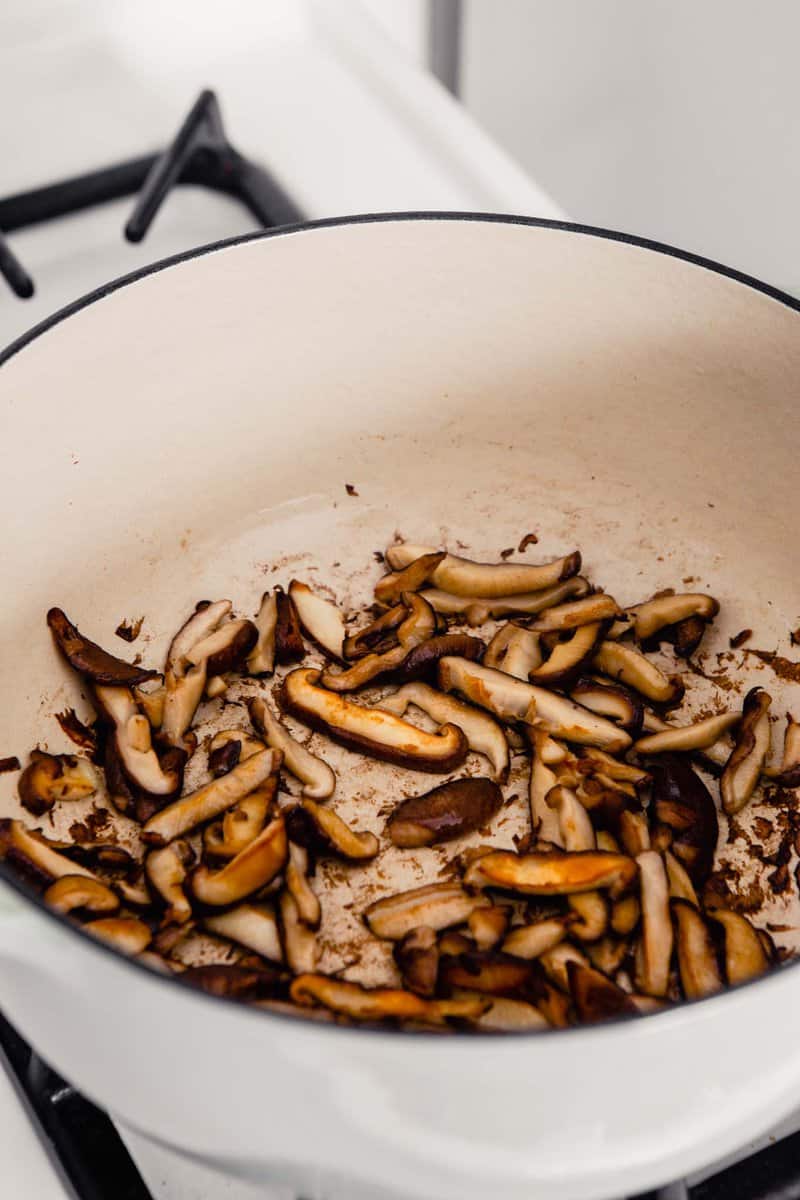
How to Make a Mushroom Sauce
One of the most delicious ways to enjoy mushrooms is to make a mushroom sauce and spoon it over Pan-Seared Filet or toss it with pasta. Here’s a quick guide to making mushrooms sauce.
- Sauté mushrooms
Melt 2 tablespoons butter and 1 tablespoon olive oil in a skillet over medium-high heat. Add 8 to 12 ounces of sliced or chopped mushrooms and stir to coat in butter and oil. Cook, stirring occasionally, until mushrooms start to turn golden brown; 5–8 minutes. - Add garlic
Add 1 large minced garlic cloves and a hearty pinch fo salt; cook 1 minute. - Deglaze
Deglaze the pan with ½ cup of dry white wine, dry red wine, or sherry. - Finish the sauce
Stir in ½ cup vegetable or chicken stock, 1 cup heavy cream, ½ cup grated Parmesan or Pecorino, and a few tablespoons chopped fresh parsley or chives. Season with salt and pepper to taste.

How to Make Mushroom Soup
We’ve got a great recipe for Hungarian Mushroom Soup! Here’s a brief rundown on how to make any kind of mushroom soup.
- Cook the mushrooms
Cook 2 cups diced onions and 1 ½ pounds sliced mushrooms in a large pot with 2 tablespoons oil or butter until onions are softened and mushrooms have shrunk in size. Transfer the mushroom mixture to a bowl. - Make a roux
Add 3 tablespoons butter to now-empty pot. Whisk in ¼ cup flour, 1 heaping tablespoon paprika, and 1 tablespoon chopped fresh dill; cook 1 minute. - Deglaze
Deglaze the pot with ½ cup dry white wine or sherry. Slowly whisk in 3 cups broth. - Simmer the soup
Add the mushrooms back into the pot along with a splash of soy sauce. Simmer until the soup has reduced by half. - Add the milk and sour cream
Whisk in 1 ½ cup whole milk and ¾ cup sour cream; bring the soup back to a simmer then remove the soup from heat. - Finish the soup and serve.
Finish the soup with a splash of vinegar and fresh parsley. Taste and adjust seasoning as needed. Top servings with fresh dill and parsley and a dollop of sour cream
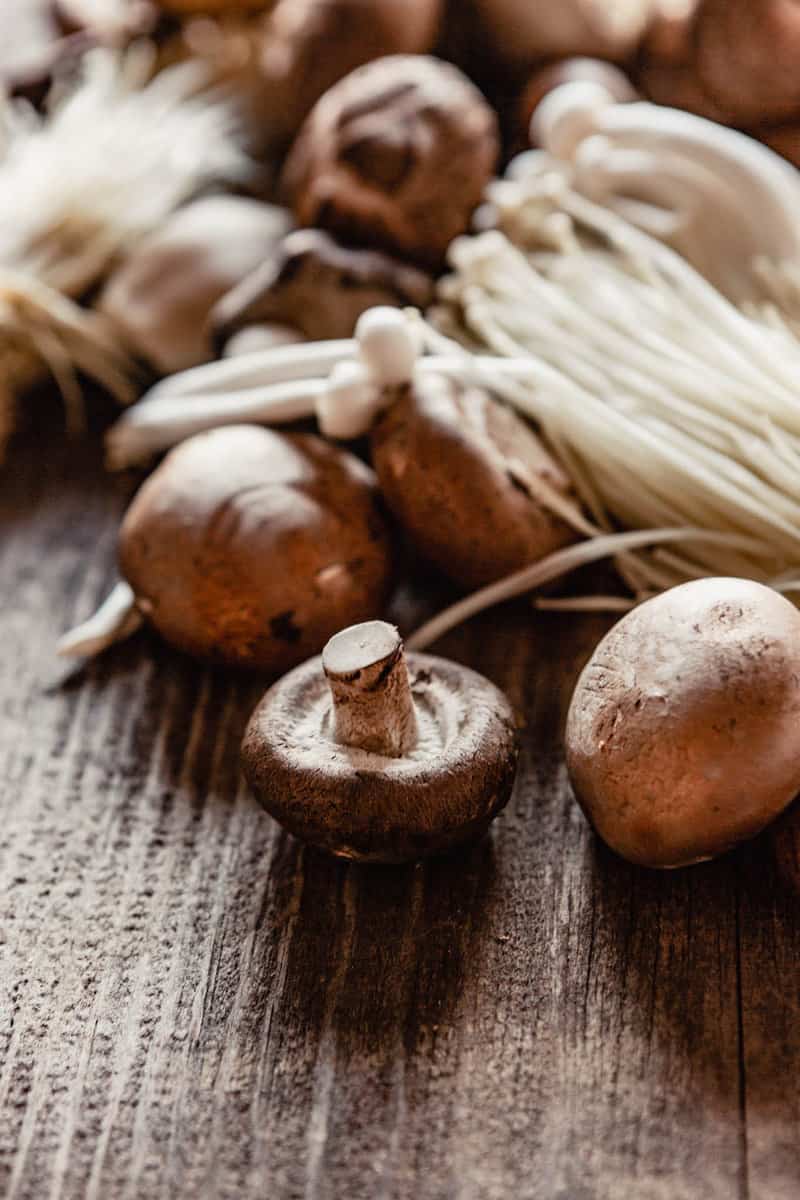
How to Wash Mushrooms
It somewhat depends on how you plan to use your mushrooms. If you’re cooking them, give them a quick rinse, if you’re using them raw in a salad or pilaf, simply brush them clean. Here’s how to do both:
Method 1: Rinse Mushrooms
Since mushrooms already have such a high water content, it’s no big deal to give them a quick rinse. Use this method if you plan to cook the mushrooms. There are two ways you can rinse mushrooms—by spraying them and spinning them dry or dunking them in water and patting or spinning them dry.
- Salad Spinner
Place mushrooms in the basket of a salad spinner. Spray mushrooms with cool water to remove any dirt or debris.
Transfer basket to salad spinner and spin mushrooms dry.
- Large Bowl
Place mushrooms in a large bowl then cover mushrooms with cool water. Use hands to gently bob mushrooms up and down until clean.
Drain mushrooms and transfer to a towel to dry. (Or spin dry in a salad spinner.)
Method 2: Dry Brush Mushrooms
When the appearance of raw mushrooms matters, turn to the dry brush method of cleaning. Why? Washing with water can discolor mushrooms.
- Damp Paper Towel
Gently brush the tops, bottoms and stems of mushrooms using a damp paper towel to remove any dirt or debris. - Toothbrush or Soft Vegetable Brush
Use a dry soft toothbrush to clean the tops, bottoms and stems of mushrooms.
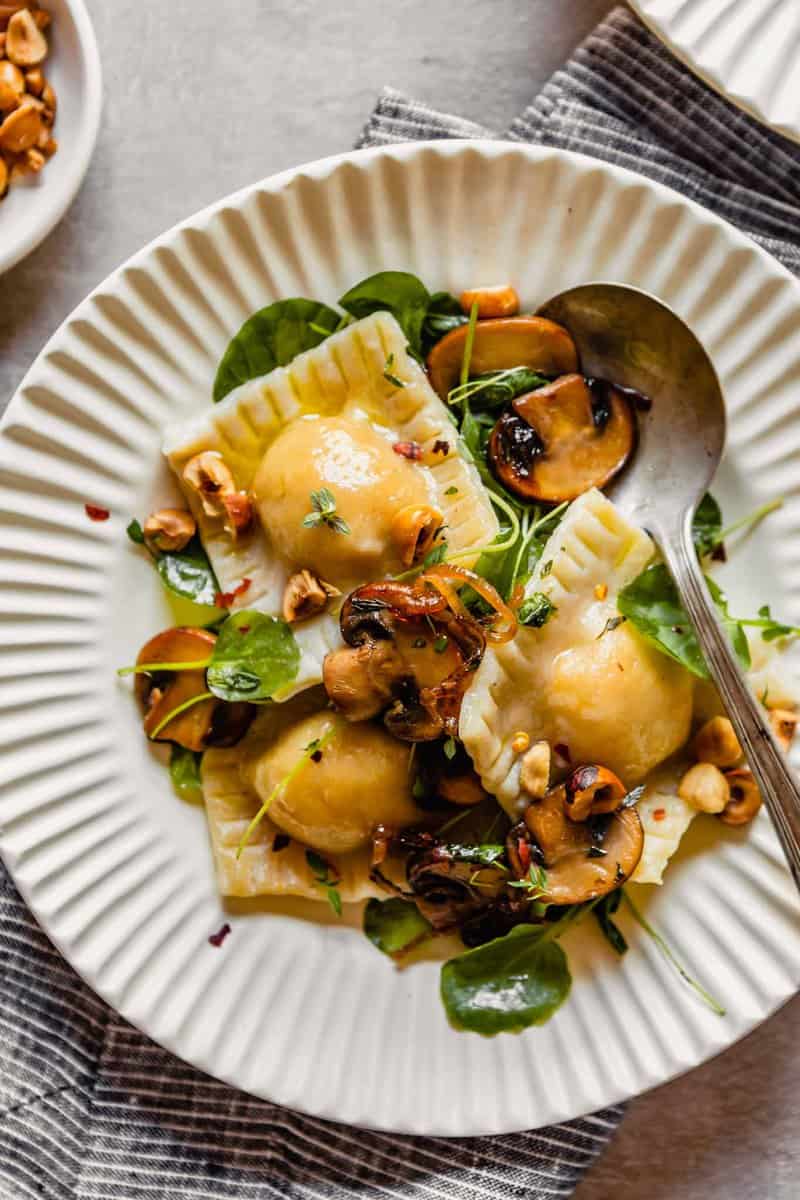
How to Store Mushrooms
If you purchase loose mushrooms, store them in a zipper-lock bag partially sealed. Stored this way, mushrooms will be able to breathe without drying out (as they do in brown paper bags).
If you purchase pre-packaged mushrooms, keep them in their original packaging. Once opened, rewrap any remaining mushroom in original packaging with additional plastic wrap as needed.
What to avoid when storing mushrooms: brown paper bags and damp paper towels.
Store dried mushrooms in an airtight container in a dry place for up to one year.
Test Kitchen Tips for Buying Mushrooms
- First off, it’s best to seek out mushrooms that are sold loosely instead of the prepackaged variety. Why? It’s pretty simple—you can pick and choose which ones you want. When purchasing mushrooms, look for those that have medium to large caps free of any discoloration or dry spots.
- You’ll also want to steer clear of any mushrooms that are moist or slimy. Mushrooms should be mildly damp and springy, they should not be mushy or spongey.
- When it comes to aroma, avoid any that have a sour smell to them. Mushrooms should smell earthy and slightly sweet, the stronger they smell (in a good way), the more flavorful they will be.
- When looking for dried mushrooms, avoid any packages that look to have quite a bit of crumbled pieces. Choose single variety packages of dried mushrooms—mixes are often not as high in quality.
When to Salt Mushrooms
When sautéing or searing mushrooms, it’s best to do it towards the end of cooking. Why? Well, salt draws moisture out of food, especially produce like mushrooms which are 92% water.
Salting at the beginning of cooking encourages too much of their water to be released. When too much water is released, mushrooms take longer to brown—this combination of too much water and a long cook time creates tough sautéed mushrooms.
It’s best to sauté mushrooms over medium-high heat at the beginning of cooking. This temperature allows some water to be released—just enough to give them a toothsome texture but not so much that a short stint over high heat can’t evaporate it off.
To finish the cooking process, add a bit of butter, season lightly with salt, and cook the mushrooms just a few minutes longer over medium heat to create a crisp golden crust. Finally, remove the mushrooms from heat and season with salt and pepper to taste.
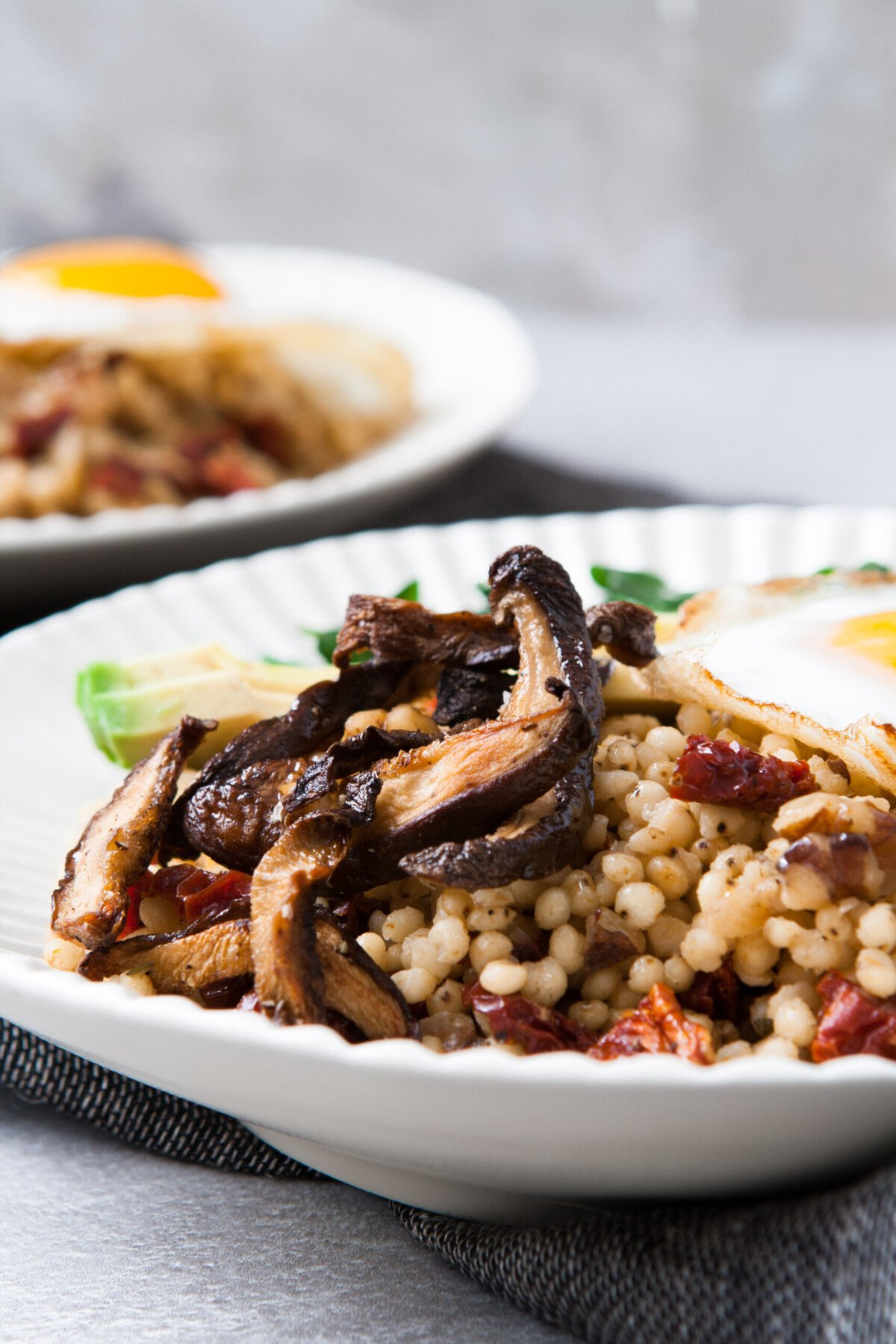
How to Rehydrate Dried Mushrooms
Rehydrating dried mushrooms is a common cooking technique used to add tons of flavor to a dish. It’s also a great way to cook with varieties of mushrooms that tend to be hard to find fresh (porcini).
Here is the best way to rehydrate mushrooms:
- Add dried mushrooms to a bowl and cover with water, let soak atleast 30 minutes, or up to 8 hours. If you’re short on time, you can use hot water, otherwise cool water works just fine.
- Gently strain rehydrated mushrooms from water using a slotted spoon, taking care not to stir up the dirt or grit that has fallen to the bottom of the bowl.
- If you’re planning to use the soaking liquid, or save it, line a fine-mesh sieve with a coffee filter, then pass soaking liquid through.
Looking for more cooking tips? Check out our tips archive!
Mushroom Recipes to Try

1
Vegan Sweet Potato Ravioli with Sautéed Mushrooms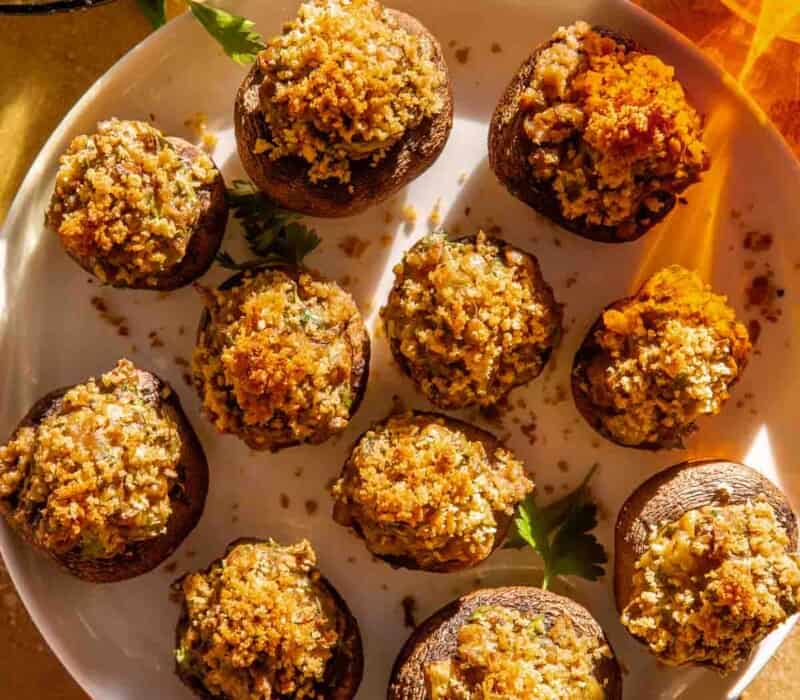
2
Healthy Vegetarian Stuffed Mushrooms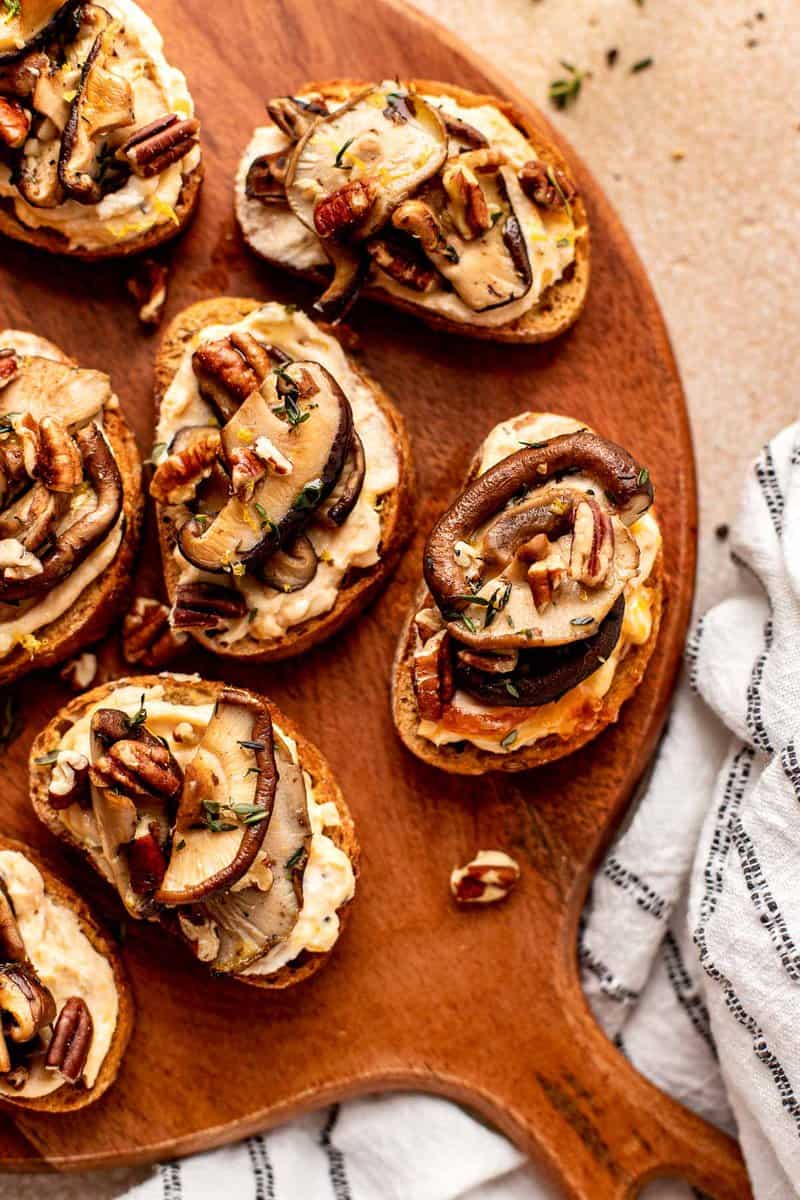
3
Mushroom Crostini with Apricot Goat Cheese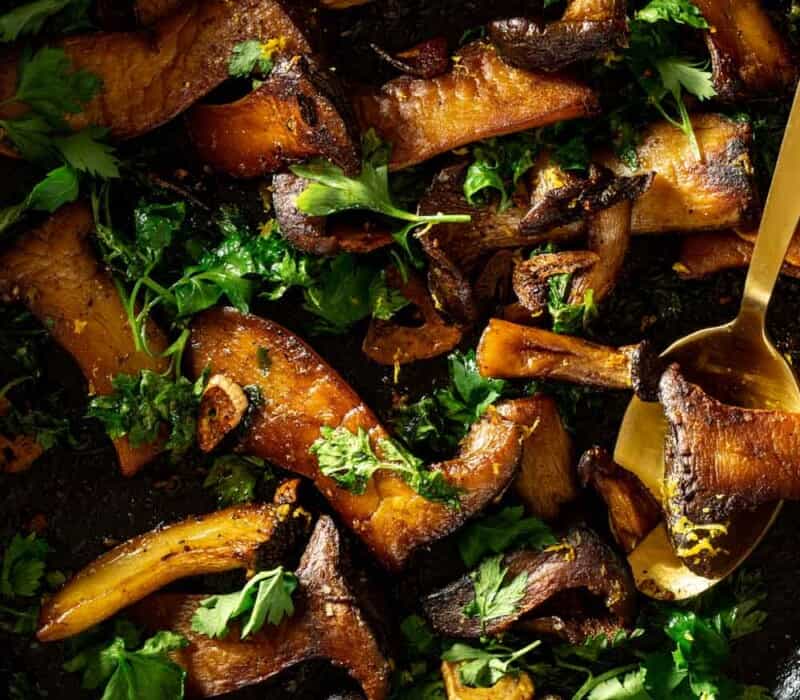
4
Pan-Fried King Oyster Mushrooms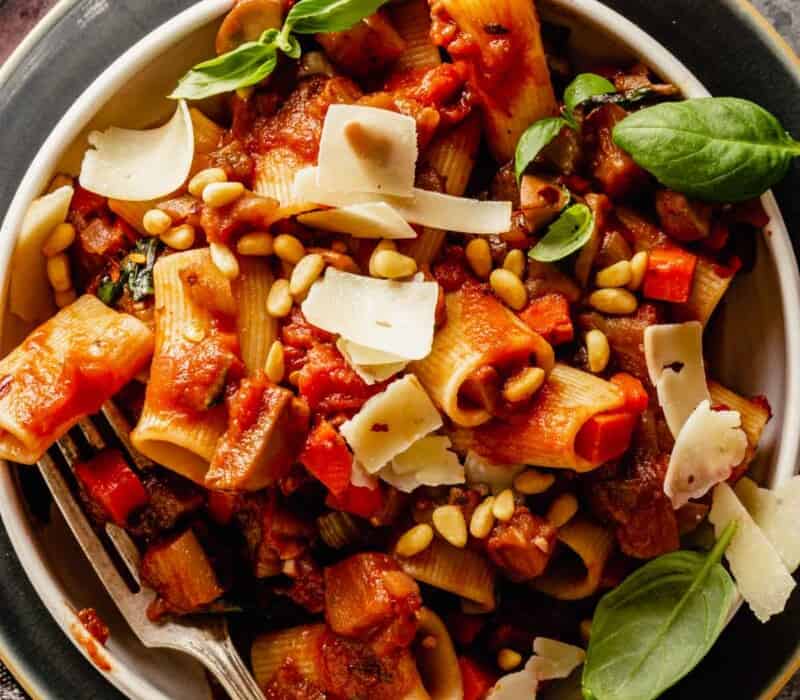
5
Mushroom Bolognese (Vegan)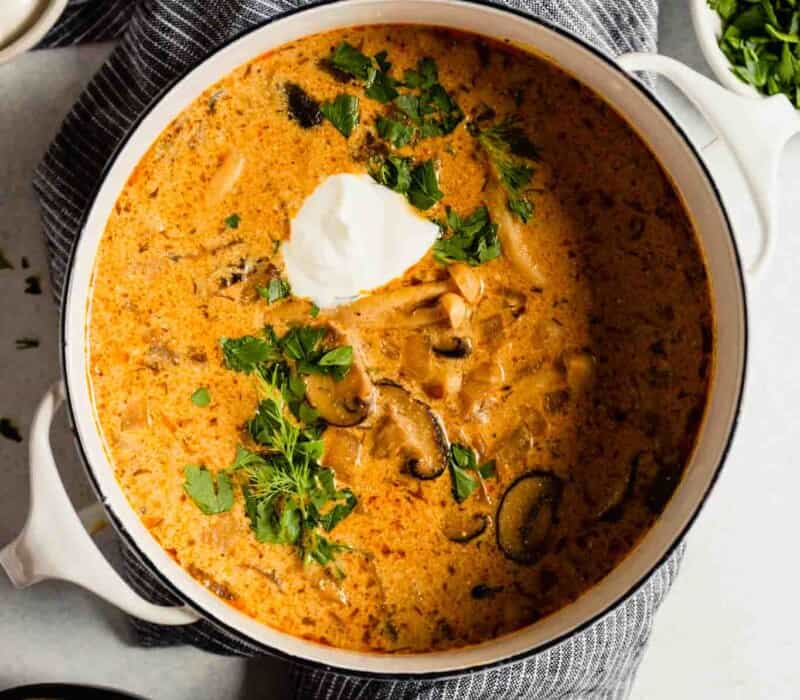
6
Hungarian Mushroom Soup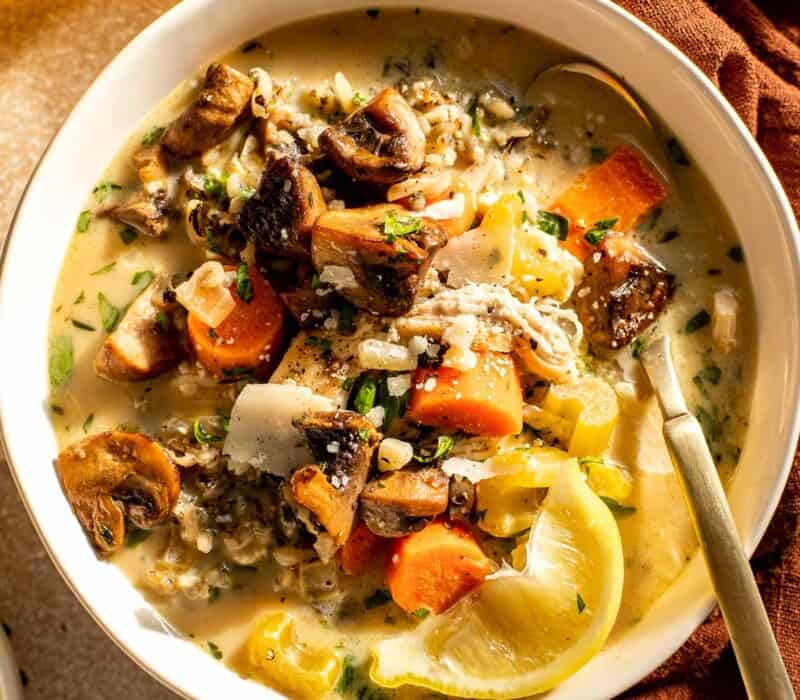
7
Healthy Slow Cooker Turkey Wild Rice SoupResources: America’s Test Kitchen, Vegetables Illustrated. America’s Test Kitchen 2019
